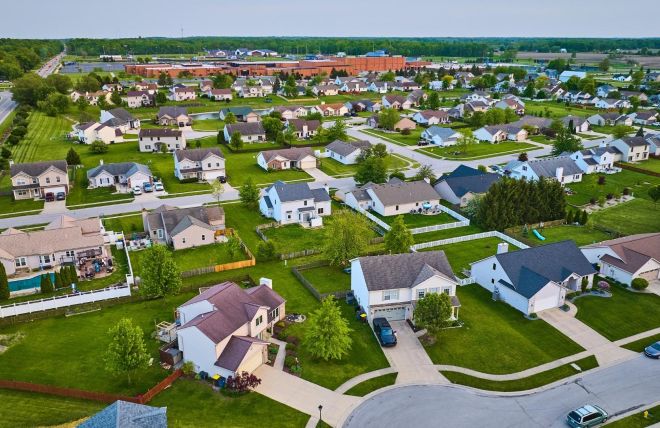Imagine living in a community where neighbors greet each other with warm smiles, children play together in safe, welcoming spaces, and residents come together regularly to celebrate, support, and uplift one another. This is the essence of community spirit—a vital element that transforms a collection of houses into a thriving, cohesive neighborhood.
Building such a vibrant community spirit doesn't happen by chance; it requires intentional effort and thoughtful strategies to engage residents.
In this blog post, we'll explore the importance of community spirit and share practical tips on how to engage your residents. From effective communication and organizing events to welcoming new members and celebrating achievements, we'll cover all the essential elements to help your community flourish.
What is Community Spirit?
Community spirit refers to the sense of belonging, mutual respect, and shared purpose among residents within a neighborhood or community. It embodies the idea that everyone contributes to the well-being of the community and supports one another, creating an environment where people feel connected and engaged. Community spirit is more than just social interactions; it's about fostering a culture of cooperation, participation, and pride in the community.
Benefits of a Strong Community Spirit
Increased Property Values
- A neighborhood with high community spirit often has well-maintained properties and common areas, which can increase the overall property values. Prospective buyers are drawn to areas where residents show pride in their homes and community.
Safer Neighborhoods
- Communities with strong bonds among residents typically experience lower crime rates. Neighbors who know and trust each other are more likely to watch out for one another and report suspicious activities, leading to a safer environment for everyone.
Increased Volunteerism
- Residents who feel a strong connection to their community are more likely to volunteer their time and skills for community projects and events. This volunteerism helps build a robust support network and drives community improvements.
By understanding and nurturing community spirit, you can transform your neighborhood into a vibrant, supportive, and thriving community where everyone feels welcome and valued.
Communication is Key
Open Channels of Communication
Effective HOA Communication is the backbone of a thriving community. Transparent and open communication between the board and residents fosters trust, encourages participation, and ensures that everyone is informed about community issues and developments. When residents feel they are kept in the loop and their voices are heard, they are more likely to engage and contribute positively to the community.
Tools for Effective Communication
Newsletters
- Regular newsletters are an excellent way to keep residents updated on community news, upcoming events, board decisions, and important announcements. They can be distributed in print or digitally, ensuring that all residents, regardless of their tech-savviness, receive the information.
Emails
- Email is a quick and efficient communication tool that allows for instant dissemination of information. Regular email updates can include meeting summaries, event invitations, and urgent notices. Ensure that your email list is up-to-date and that you have permission to contact all residents.
Community Websites
- A dedicated community website serves as a central hub for all community-related information. It can host announcements, event calendars, documents, and contact information. A well-maintained website is an invaluable resource for residents looking for information or wanting to engage with the community.
Regular Updates
Providing regular updates is crucial to maintaining transparency and keeping residents informed. These updates should be consistent and cover all aspects of community life, including:
- Board Meetings: Share minutes and key decisions from board meetings.
- Community Events: Announce upcoming events and provide recaps of past events.
- Maintenance and Improvements: Inform residents about ongoing and planned maintenance or improvements in the community.
- Policy Changes: Communicate any changes in community policies or rules clearly and promptly.
Regular updates help build trust and show residents that the board is active and engaged in managing the community effectively.
Resident Feedback
Listening to resident feedback is essential for creating a responsive and inclusive community. By valuing residents' opinions and acting on their suggestions, the board can ensure that the community's needs and preferences are met. This process involves several key steps:
Surveys
- Conducting surveys is an effective way to gather opinions and ideas from residents. Surveys can cover a wide range of topics, from satisfaction with current amenities to suggestions for future projects. Ensure that surveys are easy to complete and accessible to all residents, both online and in paper form.
Suggestion Boxes
- Providing physical or virtual suggestion boxes allows residents to share their thoughts and ideas at any time. These boxes can be placed in common areas or integrated into the community website. Regularly review and act on the suggestions to show residents that their input is valued.
Town Hall Meetings
- Hosting town hall meetings provides a platform for residents to voice their concerns and suggestions directly to the board. These meetings can foster open dialogue and help the board address issues in real-time.
By prioritizing transparent communication and actively seeking resident feedback, community associations can build a stronger, more connected, and responsive community.
Organizing Community Events
Social Events
Social events are powerful tools for bringing residents together and fostering a strong sense of community spirit. These gatherings provide opportunities for neighbors to meet, interact, and build relationships in a relaxed and enjoyable setting. By organizing a variety of social events, community associations can create a vibrant and connected neighborhood where everyone feels welcome and engaged.
Examples:
- Block Parties: Block parties are excellent for fostering community spirit as they bring together neighbors of all ages for food, fun, and socializing. They can include games, music, and activities for children and adults alike.
- Holiday Celebrations: Organizing HOA events around holidays like Independence Day, Halloween, or Christmas can create memorable experiences and traditions that residents look forward to each year. These celebrations can include parades, themed parties, and decorating contests.
- Potluck Dinners: Potluck dinners encourage residents to share their culinary talents and enjoy a meal together. These events are a great way to promote interaction and build connections over shared food and conversation.
Educational Events
Educational events provide valuable opportunities for residents to learn new skills, stay informed about important issues, and enhance their overall well-being. These events can also foster a sense of community by bringing residents together around shared interests and concerns.
Examples:
- Safety Seminars: Hosting safety seminars on topics such as fire safety, emergency preparedness, and home security can help residents protect themselves and their properties. These seminars can be conducted by local law enforcement or emergency services personnel.
- Health Screenings: Organizing health screenings for blood pressure, cholesterol, and other common health concerns can promote wellness within the community. Partnering with local healthcare providers can make these events accessible and informative.
- Gardening Workshops: Gardening workshops can teach residents how to start and maintain a garden, whether for beautification or growing their own food. These workshops can include hands-on demonstrations and tips from local gardening experts.
Volunteer Opportunities
Volunteer opportunities are essential for fostering a sense of responsibility and community pride. By organizing volunteer projects, community associations can address local needs while providing residents with meaningful ways to contribute to their neighborhood.
Examples:
- Clean-up Days: Organizing neighborhood clean-up days helps keep the community looking its best and promotes environmental stewardship. These events can involve picking up litter, planting trees, and maintaining common areas.
- Charity Drives: Hosting charity drives for food, clothing, or other necessities can support those in need while uniting residents around a common cause. Partnering with local charities ensures that donations go to those who need them most.
- Neighborhood Improvement Projects: Engaging residents in projects such as building park benches, painting community spaces, or installing new playground equipment can enhance the neighborhood's appeal and functionality while fostering collaboration and community spirit.
Welcoming New Residents
Creating a thoughtful welcome package for new residents is a great way to make them feel at home and introduce them to the community. A well-crafted welcome package provides essential information and a warm welcome that helps new residents settle in quickly and comfortably.
Contents:
- Community Information: Include a detailed guide about the community, including maps, local amenities, important contact numbers, and a calendar of upcoming events.
- Local Services: Provide information on local services such as grocery stores, medical facilities, schools, and public transportation. Highlight any community-specific services like a neighborhood watch or local clubs.
- Small Gifts: Adding small gifts such as a branded mug, tote bag, or local produce can make the welcome package feel special. Consider including discount coupons for local businesses to encourage new residents to explore the area.
Orientation Events
Orientation events are crucial for integrating new residents into the community. These events offer a chance for new members to learn about the neighborhood, meet other residents, and engage with the community's culture and activities.
Activities:
- Tours of the Community: Organize guided tours to introduce new residents to key locations within the community, such as parks, community centers, and recreational facilities. These tours can help new residents feel more comfortable and familiar with their new surroundings.
- Meet-and-Greet Sessions: Hosting informal meet-and-greet sessions with the board and other residents allows new members to connect with their neighbors and learn more about the community's leadership and governance. These sessions can include refreshments and casual conversations to make everyone feel welcome.
By organizing community events, creating welcoming packages, and holding orientation events, community associations can build a strong, connected, and vibrant neighborhood where residents feel valued and engaged.
Recognizing and Celebrating Achievements
- Recognizing Achievements: Acknowledging residents' hard work strengthens community bonds. When we spotlight those who go above and beyond, we inspire others to do the same. Don't miss the chance to give deserving residents the recognition they deserve!
- Methods: Spread the word to ensure every resident gets their moment in the spotlight. Whether through newsletter shout-outs, social media posts, or community boards, celebrating local heroes not only honors their achievements but also motivates others. Positive reinforcement goes a long way!
- Annual Awards: Organizing annual awards elevates outstanding residents and fosters community pride. From Volunteer of the Year to Community Spirit Award, these accolades remind us of our collective strength and unity. Imagine the excitement of a glamorous awards ceremony where our community stars shine!
- Inclusive Programs: Communities thrive when everyone feels welcome. By offering inclusive activities catering to diverse age groups and interests, we ensure everyone feels valued. From family-friendly events to senior citizen activities and youth sports programs, there's something for everyone to enjoy.
- Diverse Representation:Inclusivity is essential for community cohesion. Forming committees that reflect our community's diversity ensures everyone's voice is heard and valued. When everyone has a seat at the table, amazing things happen, strengthening our bonds and enriching our community tapestry.
Continuous Improvement
- Regular Review: To succeed, we must keep evolving. Regularly assessing our engagement strategies allows us to refine our approach, keeping our programs fresh and exciting. Don't hesitate to experiment with new ideas—you never know what might resonate!
- Feedback Loops: Who better to tell us what the community needs than the community itself? Whether through surveys, focus groups, or individual conversations, enable us to tailor our programs to better serve residents, ensuring we hit the mark.
- Staying Adaptable: Change is constant, especially in community engagement. Staying adaptable allows us to respond to evolving needs, whether through embracing new technologies, adjusting programs for changing demographics, or tackling unforeseen challenges. Flexibility ensures we can thrive in an ever-changing world.
Conclusion
Building a strong and vibrant community isn't just about brick and mortar; it's about people coming together to support, uplift, and celebrate each other. From recognizing residents' achievements to creating inclusive programs and continuously improving our engagement strategies, there are plenty of ways to foster a sense of belonging and connection within our community.
Sources:
- Altitude Community Law. (n.d.). Building Community within Your Community. Retrieved from https://altitude.law/resources/newsletter/building-community-within-your-community/
- Eden Project Communities. (n.d.). 15 Ideas to Improve Community Spirit. Retrieved from https://www.edenprojectcommunities.com/blog/15-ideas-to-improve-community-spirit
- Occupancy Solutions. (n.d.). How to Build Community Spirit on Your Properties. Retrieved from https://www.occupancysolutions.com/blog/how-to-build-community-spirit-on-your-properties_ae748.html
- Community Associations Institute. (n.d.). Foundation for Community Association Research. Retrieved from https://foundation.caionline.org/







